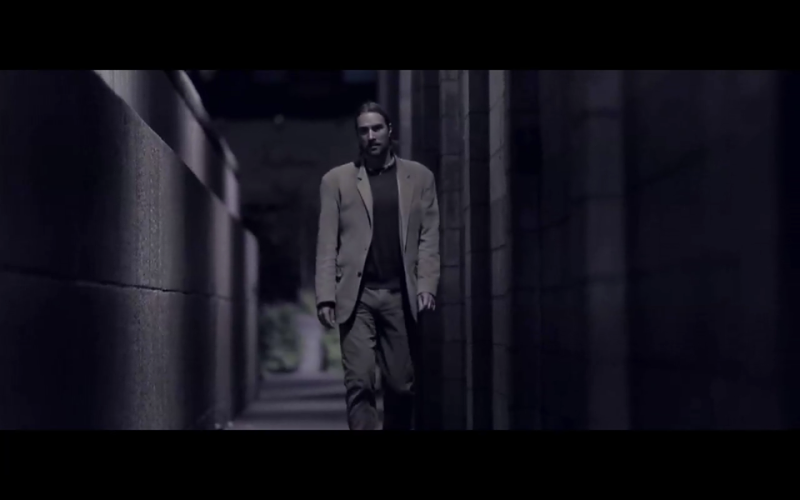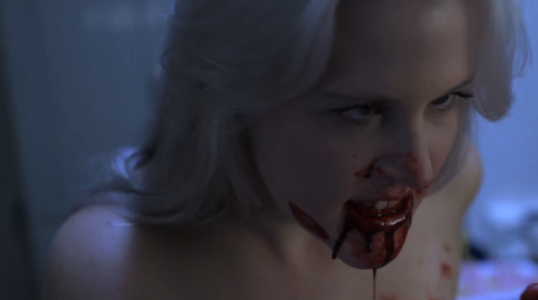Three Films From Jeremiah Kipp: Berenice, Minions, and Painkiller (reviewed by Lisa Marie Bowman)
I recently had the chance to view three short horror films that were directed by Jeremiah Kipp. Before I get into the specifics of each film, let me just say that I recommend all three of them. As a director, Kipp does a good job of building and maintaining the proper atmosphere of dread that’s necessary for good horror (especially good short horror) to work. If you’ve read my previous reviews on this site, then you know that I am an unapologetic fan of surreal and dream-like horror and, needless to say, that’s what all three of the films below deliver.
The first film that I watched was Berenice, a 19-minute adaptation of a short story by Edgar Allan Poe. Though the story has been updated so that it now takes place in present day New York, Berenice closely follows the original Poe short story. Edward (Thomas Mendolia) is a mentally unstable man who seems to spend most of his time locked away in his room, where he obsessively tinkers with a light.
When his cousin, Berenice (Cheryl Koski), moves in with him and his parents, Edward is, at first, reluctant to get close to her. However, he is slowly won over by the fact that Berenice is as much as an outsider as he is. She is dying from an unknown illness and regularly suffers seizures. While everyone else chooses to ignore Berenice, Edward grows closer and closer to her. But, haunted by visions of her savagely biting off his lower lip, Edward cannot stop obsessing over her teeth…
Full of gloomy atmosphere, Berenice is an effectively morbid mood piece. It can be appreciated as a literary adaptation but, even if you haven’t read Poe’s original short story,Berenice still works as a succession of increasingly surreal and disturbing images. In many ways, Berenice can be positively compared to the work of the great French director, Jean Rollin. A scene where Berenice and Edward visit a cemetery brings to mind a similar scene from Rollin’s Two Orphan Vampires. And, in the role of Berenice, Cheryl Koski bares more than a passing resemblance to Francoise Blanchard, the star of Rollin’s The Living Dead Girl. In the scenes were blood runs down her chin or she suddenly appears awkwardly walking naked down a dark hallway, Koski could be Blanchard’s twin.
Speaking of Cheryl Koski, she’s like a force of nature in this film. Whether she’s somewhat desperately trying to get people to talk to her at a party or awkwardly flirting with Edward, or biting someone’s face off, Cheryl Koski gives an energetic, heartfelt, and even poignant performance. Playing the far more repressed Edward, Thomas Mendolia deserves praise as well. It’s not easy to make introversion compelling but he does it.
Berenice is part of a horror anthology called Creepers, which can be ordered from Creepersfilm.com
Speaking of dream-like, the next Kipp film that I watched was practically a filmed nightmare and I mean that in the best possible way. The Minions opens with William (played by Lukas Hassel, who has a really handsome movie star look about him) standing in a dark room. As he stares out a window, he has a conversation with an unseen woman. Their dialogue is wonderfully cryptic. We see flashbacks of William walking down the streets of Manhattan. He meets two girls who appear to be drunk. He escorts them back to their apartment and he promises the drunker of the two a kiss when they reach her destination. Needless to say, the girls are not quite what they seem and a kiss is more than just a kiss…
The Minions is only 11 minutes long but it’s an amazingly effective and atmospheric 11 minutes, full of creepy images and growing paranoia. Looking over the notes that I took while watching the movie, I notice that I twice jotted down that The Minions has a “great soundtrack.” That’s not just in reference to the music, though the film’s score is appropriate ominous. Instead, I meant that The Minions is just a fascinating film to which to listen. The music playing in the background, the footsteps of people walking through the city, the sound of constant (but never seen) traffic, and the melody of Lukas Hassel’s voice; they all combine to provide the perfect soundtrack for the film’s shadowy and haunting images.
It all adds up to a very haunting piece of moody atmosphere.
The final Jeremiah Kipp short film that I watched was Painkiller, a wonderfully over-the-top look at pain and pleasure.
Two scientists (Kelly Rae LeGault and Berenice‘s Thomas Mendolia) are looking for a non-addictive way to treat the pain of being ill, a substitute for the drugs that — while they may relieve pain — are ultimately so addictive that they put the patient’s health at risk. They engineer an organism (one that actually looks a bit like a miniature version of theTtingler from the classic Vincent Price film) that will attach itself to a patient’s nervous system. The organism feeds on pain and releases endorphins while feeding. LeGault volunteers to be the test subject and, in a scene that is full of Cronenberg-style sexual imagery, Mendolia inserts a gigantic hypodermic needle into her spine.
As they soon discover, the inserted organism works. In fact, it works far too well. LeGault soon becomes addicted to pain and when she doesn’t get it, she goes as far as to attack Mendolia with an iron. (That scene made me go, “Agck!,” largely because it reminded me of when I was four and I accidentally grabbed an iron and burned my fingertips.) Even a dominatrix, hired by Mendolia, fails to satiate LeGault’s need for pain.
However, a mysterious man in a suit (played by Jerry Janda) shows up and says that LeGault is exactly what he’s been looking for…
Now, I’m not going to tell you too much about the man in the suit because that would give away the film’s twist. I’ll just say that Jerry Janda gives a really good and creepy performance here. When, towards the end of film, he explains that somebody always pays, he does so with just the hint of a self-satisfied smirk, one that tells you everything that need to know about the character and how he views the world.
Along with playing that creepy man, Jerry Janda also wrote the script for Painkiller and what a script it is. It neatly straddles the line between horror and parody, as does Kipp’s direction. Ultimately, it’s a film that suggests that addiction is a part of human nature and that pleasure and pain need each other in order to survive.
Want to see Painkiller? You can click here to buy or rent the film!



